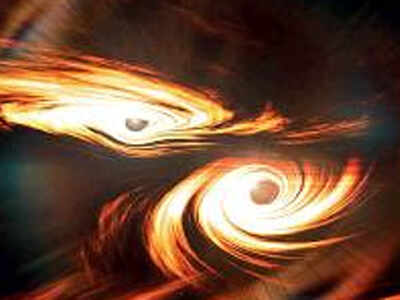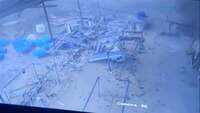
KOLKATA: The head of the Centre for Excellence in Space Science (CESS) at the Indian Institute of Science Education & Research (IISER), Kolkata, is among a team of scientists, who have discovered a previously undetected massive black hole located 17 billion light years away from Earth with a mass 142 times that of Sun.
A black hole is a region of spacetime, where the matter is so dense and gravity so strong that nothing, no particles or even electromagnetic radiation such as light, can escape from it. If the matter of the sun, whose diameter is 1.4 million km, were to be compressed to just 3km, it would turn into a black hole, from which light would not be able to escape. The merger of two such black holes leads to the release of powerful gravitational waves that are detected on Earth by two US-based Laser Interferometer Gravitational-wave Observatory (LIGO) and Europe’s Virgo detector in Italy. The latest detection is significant because a black hole this size had never been detected before. “Black holes less than 100-times or more than 10,000-times the size of Sun have been recorded earlier. But there was a problem with those that did not fit into either size. Before now, it was felt we did not have the ability to detect them. But following the detection made on May 21, 2019, we can now probe into a gap we did not understand in Astrophysics,” said Rajesh Nayak of CESS at IIESR Kolkata. He was part of the team that analysed the gravitational waves that led to the finding.
Stellar mass black holes are typically created when a large star runs out of its nuclear fuel and generation of light and heat stops. Without that outward pressure, the star’s outer layers collapse under its own gravity, triggering a massive supernova and leaving behind a compact object. In bigger stars, the collapse is more catastrophic, that destroys the star and leaves behind a black hole, explained Nayak, who has been working on gravitation wave detection in LIGO since 2001.
After returning to India in 2011, he has been part of the LIGO India project that envisages setting up a gravitational wave detector in Maharashtra. Though the gravitational waves of the latest black hole merger were detected well over a year ago, the analysis of the curious gravitational wave that consisted of just four up and down wave cycles lasting a tenth of a second took time with scientists to calculate and be sure that it was definitely a black hole the size that had never been detected before.
A black hole is a region of spacetime, where the matter is so dense and gravity so strong that nothing, no particles or even electromagnetic radiation such as light, can escape from it. If the matter of the sun, whose diameter is 1.4 million km, were to be compressed to just 3km, it would turn into a black hole, from which light would not be able to escape. The merger of two such black holes leads to the release of powerful gravitational waves that are detected on Earth by two US-based Laser Interferometer Gravitational-wave Observatory (LIGO) and Europe’s Virgo detector in Italy. The latest detection is significant because a black hole this size had never been detected before. “Black holes less than 100-times or more than 10,000-times the size of Sun have been recorded earlier. But there was a problem with those that did not fit into either size. Before now, it was felt we did not have the ability to detect them. But following the detection made on May 21, 2019, we can now probe into a gap we did not understand in Astrophysics,” said Rajesh Nayak of CESS at IIESR Kolkata. He was part of the team that analysed the gravitational waves that led to the finding.
Stellar mass black holes are typically created when a large star runs out of its nuclear fuel and generation of light and heat stops. Without that outward pressure, the star’s outer layers collapse under its own gravity, triggering a massive supernova and leaving behind a compact object. In bigger stars, the collapse is more catastrophic, that destroys the star and leaves behind a black hole, explained Nayak, who has been working on gravitation wave detection in LIGO since 2001.
After returning to India in 2011, he has been part of the LIGO India project that envisages setting up a gravitational wave detector in Maharashtra. Though the gravitational waves of the latest black hole merger were detected well over a year ago, the analysis of the curious gravitational wave that consisted of just four up and down wave cycles lasting a tenth of a second took time with scientists to calculate and be sure that it was definitely a black hole the size that had never been detected before.

Coronavirus outbreak
Trending Topics
LATEST VIDEOS
More from TOI
Navbharat Times
Featured Today in Travel
Get the app









